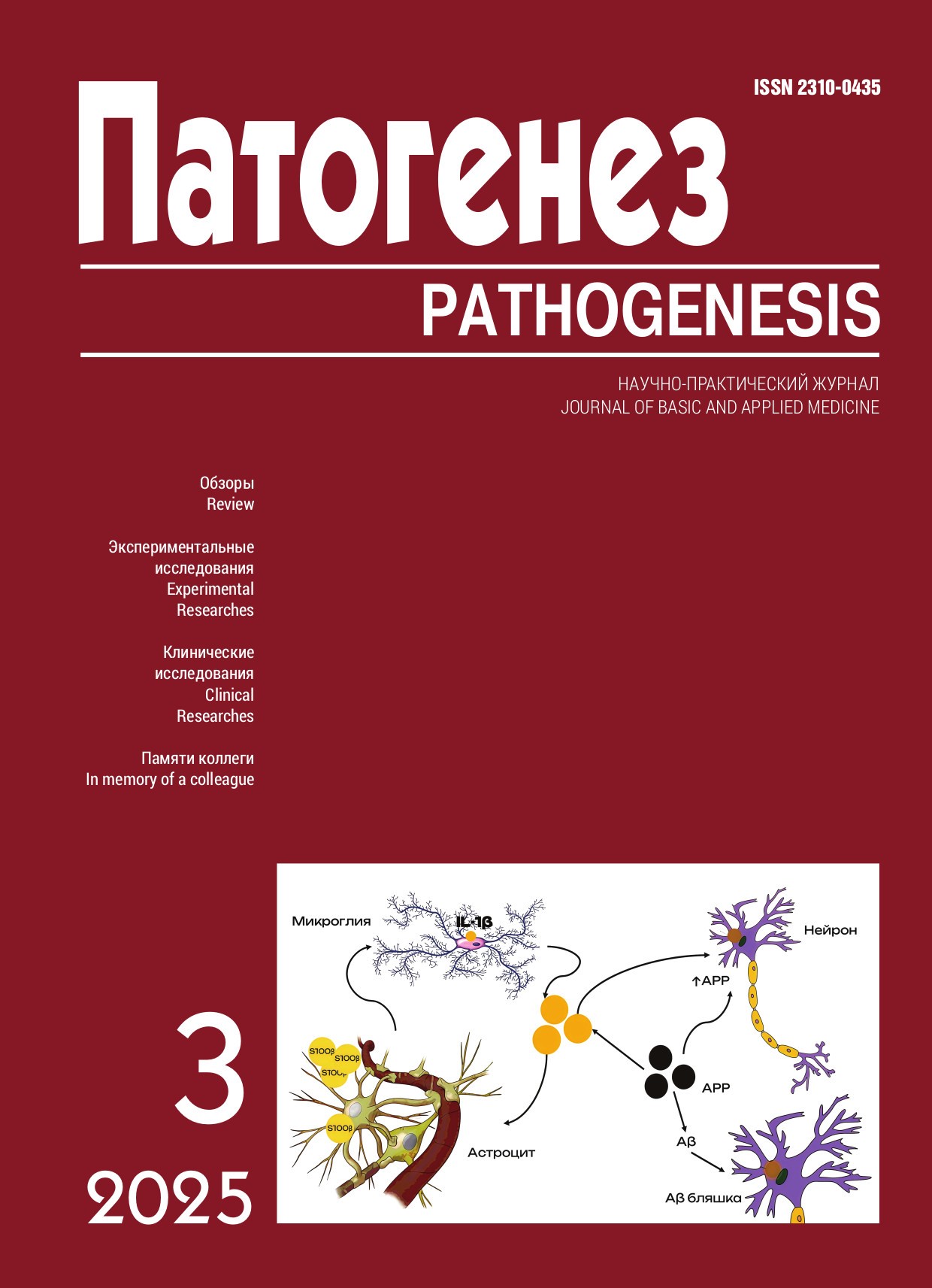“Shock cell” ligands in immunological diagnostics of neurodegenerative diseases
Abstract
The relevance of the study is due to the importance of searching for new biomarkers and therapeutic targets for neurodegenerative diseases and the consequences of traumatic brain injury (TBI). In recent years, special attention has been paid to studying the role of proteins S100B, cyclophilin A (CypA) and heat shock protein 27 (HSP27) in the pathogenesis of these conditions. These proteins not only reflect the degree of damage to the nervous tissue, but also actively participate in the regulation of neuroinflammatory processes, oxidative stress and the functioning of the blood-brain barrier (BBB).
The aim of the work was a comprehensive analysis of the clinical and pathogenetic significance of S100B, CypA and HSP27 in neurodegenerative diseases and TBI, including an assessment of their diagnostic potential and prospects for therapeutic use.
Materials and Methods. The study included a systematic analysis of scientific publications for the period 2008–2023, selected from the PubMed and eLibrary databases. The inclusion criteria were: 1) studies demonstrating the association of the studied proteins with neurodegenerative processes; 2) works containing quantitative data on expression levels; 3) studies revealing the molecular mechanisms of protein action. Theoretical reviews without experimental confirmation and studies that did not meet the specified criteria were excluded.
Results. Analysis of literature data showed that S100B has a dual biological role: in nanomolar concentrations it exhibits neuroprotective properties, while in micromolar concentrations it promotes the development of neuroinflammation and apoptosis. A clear correlation was established between the S100B level and the severity of TBI, which confirms its value as a prognostic marker. In Alzheimer's disease, overexpression of S100B is associated with increased amyloidosis and neuroinflammation. CypA demonstrated complex pathogenetic effects: on the one hand, it protects cells from oxidative stress, on the other hand, through the activation of NF-κB and MMP-9, it promotes neurodegeneration. HSP27 has proven itself as an important neuroprotective factor that promotes the survival of neurons and accelerates recovery from damage.
Conclusions. The data obtained allow us to conclude that S100B is the most promising biomarker for clinical use in TBI and neurodegenerative diseases. At the same time, all three proteins studied are of interest as potential therapeutic targets. Further research should be aimed at developing methods for modulating the activity of these proteins, which may lead to the creation of new effective strategies for the treatment of brain damage and neurodegenerative diseases.




